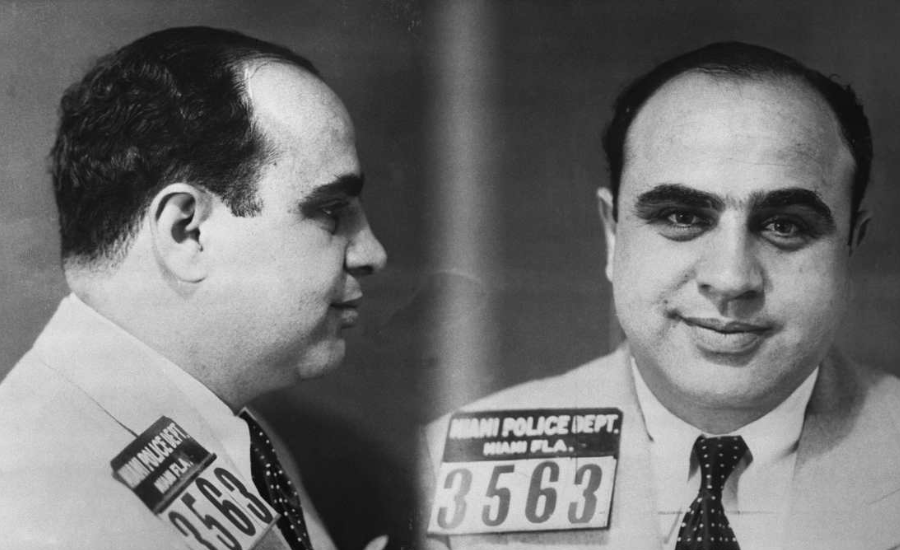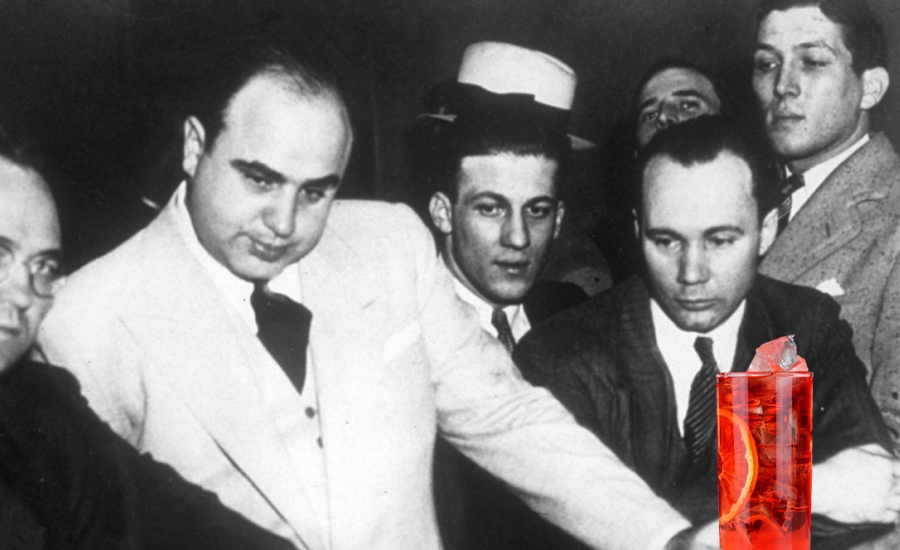Al Capone Net Worth: The Rise, Fall, And Mystery Of His Lost Fortune
Al Capone Net Worth
$100 Million
Al Capone Net Worth
Al Capone net worth was historically estimated at around $100 million at the time of his death—a figure that would be exponentially higher when adjusted for modern inflation.. His wealth was amassed primarily through illicit enterprises during the Prohibition era, including bootlegging, illegal gambling, and various forms of racketeering.
Capone’s criminal career began in modest roles—initially as a member of New York’s Five Points Gang and later working as a bouncer in underground establishments. Over time, he leveraged his street connections and ruthlessness to ascend the ranks, eventually taking control of the Chicago Outfit. For roughly seven years, Capone ruled his criminal empire, employing aggressive tactics and forging key political alliances, notably with Chicago mayor William Hale Thompson, to shield and expand his operations.
A pivotal moment in his downfall came with the Saint Valentine’s Day Massacre, a high-profile event that intensified public and governmental resolve to crack down on organized crime. Ultimately, law enforcement succeeded in sidestepping the challenges of prosecuting him for his broader criminal activities by charging him with tax evasion. In 1932, Capone was sentenced to 11 years in prison—a sentence he served for nearly eight years before his early release in 1939 due to deteriorating health.
Capone’s story, marked by immense wealth and influence juxtaposed with a dramatic fall from power, continues to captivate historians and the public alike, ensuring his legacy as a defining, albeit controversial, figure in American criminal history.
Al Capone Wiki Bio
| Attribute | Details |
| Full Name | Alphonse Gabriel Capone |
| Date of Birth | January 17, 1899 |
| Place of Birth | Brooklyn, New York, USA |
| Date of Death | January 25, 1947 |
| Place of Death | Miami, Florida, USA |
| Cause of Death | Stroke, complications from syphilis |
| Nationality | American |
| Occupation | Gangster, Crime Boss |
| Known For | Leading the Chicago Outfit, Prohibition-era bootlegging |
| Criminal Activities | Bootlegging, gambling, extortion, murder, racketeering |
| Conviction | Tax evasion (1931) |
| Sentence | 11 years in federal prison, later imprisoned in Alcatraz |
| Spouse | Mae Coughlin (married in 1920) |
| Children | 1 son, Albert Francis Capone |
| Al Capone net worth (at peak) | $1o0 million (adjusted for inflation) |
| Legacy | One of the most notorious gangsters in American history |
Who Is Al Capone?
Born on January 17, 1899, in Brooklyn, New York, Al Capone emerged as one of the most infamous figures in American criminal history. His journey led him from the East Coast to Chicago, where he ultimately assumed leadership of the Chicago Outfit—a powerful criminal organization deeply involved in bootlegging, gambling, and violent enforcement during the Prohibition era.
Capone’s ascent was fueled by a blend of ruthless strategy and savvy business tactics, which allowed him to dominate Chicago’s underworld and secure a reputation that both terrified and, to some, fascinated the public. Despite his criminal activities, Capone became a well-known public figure, with many drawn to his charismatic presence and considerable wealth.
However, his reign of power was abruptly halted in 1931 when he was convicted of tax evasion—a conviction that resulted in a prison sentence. His time behind bars marked the beginning of the end for his financial empire and influence. Al Capone’s decline continued until his death in 1947, leaving behind a complex legacy as one of the most notorious mobsters in American history.
Early Life And Family Background Of Al Capone

Alphonse Gabriel Capone, famously known as Al Capone, was born on January 17, 1899, in Brooklyn, New York, to Italian immigrant parents. His mother, Teresa, worked as a seamstress, while his father, Gabriele, was a barber. Growing up in a large family with eight siblings—Vincenzo, Raffaele, Salvatore, Ermina, Ermino, Albert, Matthew, and Mafalda—Capone’s early environment was both vibrant and challenging. Tragically, his sister Ermina passed away during infancy. Notably, his brothers Salvatore (often called Frank) and Raffaele (known as Ralph) would later become influential figures within his criminal enterprise.
Capone’s formal education was brief; he attended a Catholic school but was expelled at the age of 14 following an altercation with a teacher. After leaving school, he took on various odd jobs, including working in a bowling alley and a candy store, and even dabbled in semi-professional baseball. These early life experiences, marked by hardship and a series of menial jobs, set him on a path that eventually led to involvement in organized crime.
Al Capone Family Ties And Their Impact
In 1918, Capone married Mae, who became a central figure in his personal life and public image. Despite the notorious nature of his criminal activities, Mae remained steadfastly supportive throughout his rise and eventual fall from power. Although she was not directly involved in his illegal operations, her loyalty was crucial in safeguarding the family’s reputation, particularly after his conviction for tax evasion.
Together, they had a son, Albert Francis Capone—often referred to as Sonny—born in the same year as their marriage. Unlike his father, Sonny deliberately chose a quieter life, distancing himself from the criminal legacy that had defined Al Capone’s existence. While Capone once commanded an estimated net worth of $100 million at the height of his influence, much of that fortune dissipated during his time in prison. Nonetheless, the legacy of his wealth and the impact of his life continue to resonate in the annals of American history.
How Did Al Capone Amass His Wealth?
Al Capone’s journey to immense wealth began in his youth. As a teenager, he became affiliated with the notorious Five Points Gang and worked as a bouncer for a mere dollar a day. His shifts in upscale brothels allowed him to earn substantial tips, laying the groundwork for his future in organized crime.
A turning point occurred one evening when Capone intervened during a mugging at one of these establishments. The man he rescued was Johnny Torrio, the influential leader of a criminal syndicate that specialized in smuggling alcohol. Impressed by Capone’s actions, Torrio recruited him to Chicago, initially assigning him the role of personal bodyguard.
Over time, Capone’s responsibilities expanded beyond protection. As he built Torrio’s trust, he became deeply involved in managing the operations, earning over $2,000 a month—a sum equivalent to about $50,000 in today’s currency. After Torrio narrowly escaped an assassination attempt by rival North Side gunmen, he stepped back from the limelight, entrusting the organization to Capone.
In Chicago, with the backing of influential city officials and supportive elements within the police force, Capone grew his illegal alcohol business exponentially. By 1930, at the age of 31, his annual income soared to approximately $3 million, which translates to around $70 million today.
Capone’s wariness of betrayal was legendary. He reportedly concealed more than $15 million in cash in various hidden spots around Chicago—often stashed in house basements. However, following his imprisonment, he suffered from neurological issues including memory loss and partial paralysis. This decline left him unable to remember the locations of his hidden money, and to this day, much of that cash remains missing.
The Dismantling Of Capone’s Financial Empire: A Detailed Timeline

The unraveling of Al Capone’s vast fortune is as intriguing as it is complex, reflecting both the scale of his operations and the challenges faced by authorities in tracking illicit wealth during the early 20th century. The process of asset destruction spanned years and involved meticulous legal and investigative efforts, all against a backdrop of Capone’s notorious paranoia and intricate financial maneuvers.
Key Milestones In The Asset Destruction Timeline
- 1931: The Initial Freezing of Assets
In 1931, government agencies took the first major step by freezing a significant portion of Capone’s financial resources. This action was aimed at halting the flow of funds from his criminal enterprises, which had grown exponentially during the Prohibition era. - 1932–1939: Ongoing Legal Battles
Over the next several years, relentless legal proceedings further chipped away at Capone’s wealth. During this period, numerous court cases and financial investigations systematically targeted the illicit transactions and cash flows that fueled his empire. Authorities struggled with the era’s predominantly cash-based economy and the lack of digital records, which made it arduous to trace money through the labyrinth of underground financial networks. - 1939: The Seizure of the Bulk of His Assets
By the time Capone was released from prison in 1939, the legal machinery had effectively dismantled most of his financial holdings. What remained was a shadow of his former wealth—a dramatic fall from the staggering annual income he once commanded. His empire, once generating millions annually (adjusted to modern-day values), had been nearly obliterated. - 1947: The Final Financial Collapse
Capone’s later years were marked by severe personal and financial decline. By 1947, his fortunes had dwindled to the point of final collapse. His health was failing, and he was largely disconnected from the financial schemes that had once defined his power.
Family Life Of Al Capone: Marriage And Offspring
Al Capone’s personal life was marked by a longstanding marriage and a complicated reputation regarding his relationships. In 1918, he married Mae Josephine Coughlin—better known as Mae Capone—in a ceremony on December 30, 1918. Their union, which lasted until his death in 1947, provided a semblance of stability amid his tumultuous career in organized crime.
Together, Al and Mae had one child, Albert Francis Capone, affectionately known as “Sonny.” Born on December 4, 1918, Sonny entered the world just a few weeks before the couple’s wedding, making him the sole heir to the Capone legacy. Growing up in a household overshadowed by his father’s notorious reputation, Sonny’s life was inevitably intertwined with the complexities of his family’s public image.
Despite the public face of domestic life that the Capone family maintained, Al Capone’s personal relationships were far more intricate and controversial. Prior to his eventual arrest by the FBI, Capone was known for his lavish lifestyle, which included spending his nights with multiple women. Contemporary media reports from the era often highlighted his escapades, with some accounts suggesting that he might have fathered as many as 400 children outside of his marriage. These reports, whether fully substantiated or exaggerated by the press, contributed to the enduring legend of Capone as not only a formidable figure in organized crime but also a man whose personal life was as dramatic and unpredictable as his criminal enterprises.
This duality in Capone’s life—balancing a committed family life with a reputation for extensive extramarital liaisons—continues to fascinate historians and the public alike, reflecting the complex interplay between his personal and professional worlds.
The Enigma Of Hidden Wealth
One of the most enduring mysteries surrounding Capone’s legacy is the speculation about undiscovered or hidden wealth. Despite the extensive efforts to track his assets, rumors persist that significant sums of money remain hidden, scattered across various locations. Historians and researchers suggest that Capone’s deep-seated distrust compelled him to disperse his wealth in numerous secretive locations to evade total financial ruin.
Potential Locations Of The Hidden Fortune

- Secret Bank Accounts
It is believed that Capone may have stashed funds in covert bank accounts, carefully shielded from prying eyes. - Underground Bunkers
Some accounts hint at hidden caches of cash stored in secure underground bunkers, designed to be inaccessible to authorities. - Remote Property Holdings
Remote and isolated properties might have served as hiding places for physical assets, ensuring that even if one location was compromised, others would remain intact. - Family Member Accounts
Trusting his closest relatives, Capone is rumored to have distributed portions of his wealth into accounts held by family members, further complicating efforts to consolidate his assets. - Holdings with Trusted Associates
In a bid to further diversify and secure his fortune, Capone may have entrusted significant sums to close associates within his criminal network.
Challenges In Tracing Capone’s Wealth
Investigators faced numerous hurdles in piecing together the full extent of Capone’s financial empire:
- Absence of Digital Records:
Operating in an era before modern digital banking, Capone’s wealth was largely maintained in cash and physical assets, making it inherently difficult to track. - Complexity of Cash Transactions:
The bulk of his transactions were conducted in cash, often moving through a web of intermediaries and secretive channels that defied easy documentation. - Multiplicity of Hiding Spots:
The deliberate scattering of his assets across various locations added layers of complexity to the investigative process. - Extensive and Shadowy Criminal Networks:
The involvement of a broad network of criminals and intermediaries, who operated in the shadows, meant that many financial trails were quickly obscured. - Limited Forensic Accounting Tools:
The rudimentary state of forensic accounting at the time made it challenging for authorities to untangle the intricate web of illicit finances.
Legacy Of The Lost Fortune
By the end of his life, Capone’s financial empire was largely a relic of a bygone era, and much of the true extent of his hidden wealth remains shrouded in mystery. Even after his release from prison, reports suggest that he occasionally expressed confusion about the whereabouts of his remaining assets—likely a consequence of the neurological damage he suffered from advanced syphilis.
The saga of Capone’s lost fortune not only underscores the ingenuity and ruthlessness of one of America’s most infamous gangsters but also serves as a compelling case study in the challenges of tracing criminal wealth in an era before modern forensic techniques. Despite exhaustive investigations, experts continue to believe that millions of dollars might still lie undiscovered, hidden away in secretive corners of history, waiting to be uncovered.
Hidden Wealth And Family Finances Of Al Capone

Capone was notoriously distrustful, going so far as to hide over $15 million in cash across various locations in Chicago—often stashing it in the basements of residential properties. However, after his imprisonment, his health took a steep decline due to neurological issues, including memory loss and partial paralysis. These complications rendered him unable to recall the locations of his hidden caches when his family visited him in jail, and to this day, none of that buried money has been recovered.
Regarding the financial legacy for his family, the situation is complex. The U.S. government seized all of Capone’s legitimate businesses and bank accounts, meaning that his overall net worth was not inherited by his relatives. Nevertheless, during his court proceedings, Capone managed to orchestrate the transfer of approximately $2 million in cash to family members—a sum which, when adjusted for inflation, would be worth around $30 million today. Despite these transfers, the bulk of his fortune was effectively dismantled and did not survive as a cohesive inheritance.
The Final Chapter: Al Capone’s Death And Declining Health
Al Capone’s life came to an end on January 25, 1947, when he was 48 years old. In the twilight of his years, his once formidable presence had been significantly diminished by a series of debilitating health issues. The official cause of death was cardiac arrest triggered by a stroke—a stark conclusion for a man who once commanded immense power in the underworld.
In the years preceding his death, Capone’s physical and mental condition had deteriorated markedly. His long battle with syphilis, which had gone untreated for many years, led to neurosyphilis—a condition that severely impaired his cognitive abilities and contributed to partial paralysis. This debilitating illness not only robbed him of his former vigor but also played a central role in the gradual collapse of his criminal empire.
Capone’s demise stands as a poignant reminder of the harsh realities of his lifestyle. Despite the immense wealth and notoriety he once enjoyed, his later years were overshadowed by the consequences of his past actions and the relentless progression of disease. His death marked the end of an era for one of America’s most infamous gangsters, whose legacy remains a complex blend of ruthless ambition and personal tragedy.
FAQs About Al Capone Net Worth
1. What was the cause of Al Capone’s death?
Al Capone died on January 25, 1947, due to cardiac arrest, which was triggered by a stroke. His health had been declining for years due to neurosyphilis, which led to severe mental and physical deterioration.
2. Did Al Capone have any children?
Yes, Al Capone and his wife, Mae Capone, had one son, Albert Francis “Sonny” Capone, born in 1918. Despite widespread rumors, there is no confirmed evidence that he fathered other children.
3. What happened to Al Capone’s fortune?
Much of Capone’s wealth was seized by the U.S. government due to legal actions against him. However, some believe he may have hidden large sums of money in secret locations, though none have been definitively found.
4. How did Al Capone’s health decline?
Capone suffered from untreated syphilis for many years, which led to neurosyphilis. This condition caused cognitive decline, memory loss, and partial paralysis. By the time he was released from prison in 1939, he was no longer mentally fit to manage his affairs.
5. Where is Al Capone buried?
Al Capone was initially buried at Mount Olivet Cemetery in Chicago but was later moved to Mount Carmel Cemetery in Hillside, Illinois, where he rests alongside his family.
Conclusion
Al Capone’s life was a paradox of immense power and ultimate downfall. Rising from a humble background in Brooklyn, he became one of the most infamous crime bosses in history, amassing vast wealth and influence during the Prohibition era. However, his reign came to an abrupt end with his conviction for tax evasion, followed by years of imprisonment that further eroded his health.
His later years were marked by illness and obscurity, a far cry from the feared and untouchable figure he once was. Though he died in relative seclusion, his name remains synonymous with organized crime, leaving behind a legacy that continues to intrigue historians and the public alike. Whether through his notorious crimes, legal battles, or the enduring mystery of his hidden fortune, Al Capone’s story serves as both a cautionary tale and a testament to the darker side of the American Dream.
Stay in touch with us for more updates and alerts! Lep Bound






